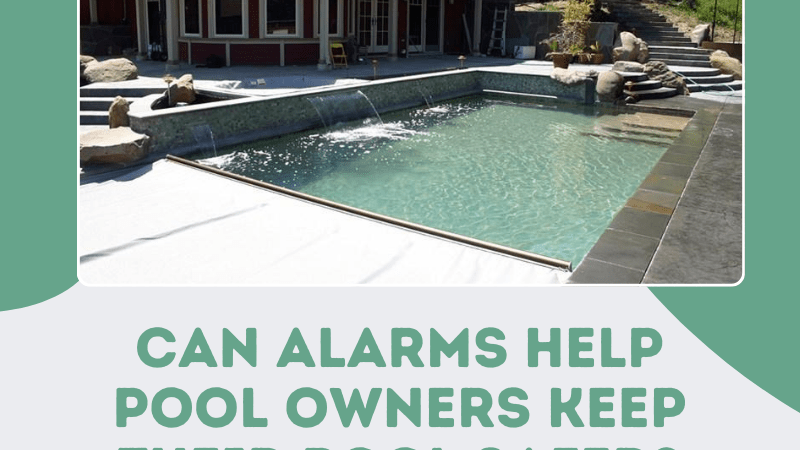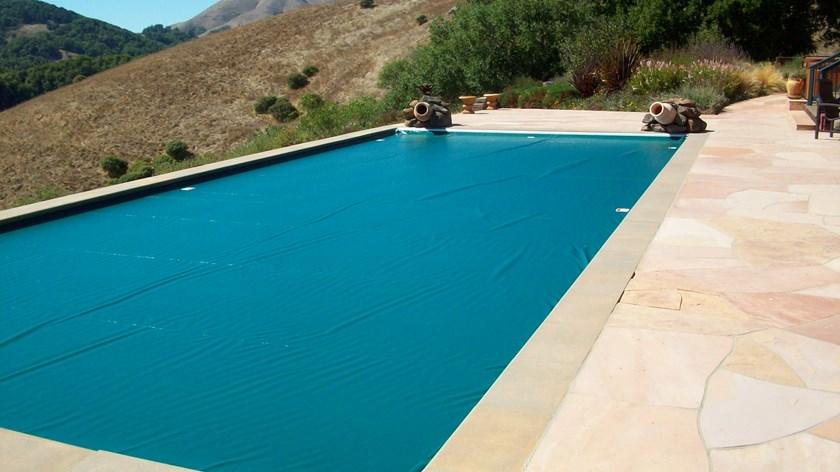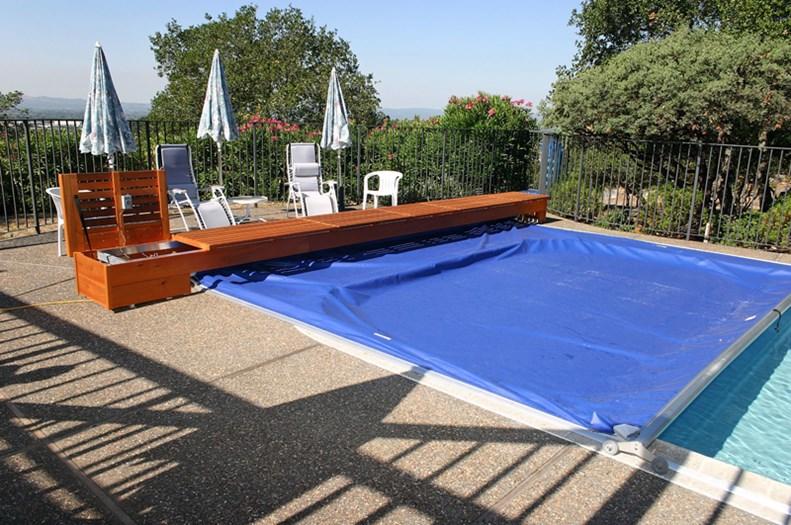
Owning a swimming pool can be a wonderful experience. However, ensuring its safety is paramount. By adhering to safety regulations, implementing preventive measures, and promoting awareness, pool owners can create a safe environment for themselves, their families, and their guests.
While swimming pools offer endless fun and relaxation, they pose significant safety risks, especially when children and pets are left unattended for any time. Drowning incidents, sadly, remain a leading cause of accidental death worldwide. Various safety measures, including pool alarms, have been developed and implemented to mitigate those risks.
Pool alarms are innovative devices designed to alert pool owners and supervisors to potential dangers in and around the pool area. These alarms come in different forms and utilize various technologies to detect disturbances or unauthorized access to the pool.
The need for pool safety
California is one of the states with the most pool drowning incidents. Drowning is still a leading cause of injury-related deaths among children under the age of five. The data from the California Department of Developmental Services shows that:
- 32 children aged five or less drowned in pools during 2018. 23 additional children drowned in other bodies of water.
- 40 children drowned in swimming pools throughout 2010, making it the worst record in recent years.
- An average of 33 children of the same age group drown in pools each year.
By presenting compelling statistics and making a strong case for the importance of effective safety measures, anyone can help raise awareness and advocate for policies and initiatives to reduce pool-related accidents in California.
Proactive measures are crucial for ensuring pool safety due to the potential risks of swimming pools. They can prevent accidents, comply with regulations, mitigate safety risks, promote water safety awareness, offer peace of mind, and promote a culture of safety and responsibility around pool usage.
Types of pool alarms
There are several types of pool alarms available, including:
- Surface wave sensors detect disturbances on the water’s surface, such as ripples caused by someone falling or entering the pool. They alert pool users to unexpected movements and can be adjusted to differentiate between natural disturbances and potential emergencies.
- Sub-surface motion detectors are installed underwater, and sensors detect movements beneath the water’s surface. They can sense when someone jumps or falls into the pool, triggering an alarm immediately.
- Perimeter alarms are installed around the pool area and rely on motion sensors or infrared technology to detect movement within the designated boundary. They alert caregivers when children or pets approach the pool area unsupervised.
- Gate alarms are installed on gates or doors leading to the pool area. They trigger an alarm when the gate or door is opened, alerting caregivers to potential access to the pool.
- Wristband alarms. Designed for children and non-swimmers, these alarms trigger when they come into contact with water, alerting adults immediately if the wearer falls into the pool.
Effectiveness of pool alarms
In Atlanta, Georgia, in July 2021, a man experienced a cardiac arrest while swimming laps. As he lost consciousness and sank to the bottom of the pool, the drowning detection started going off. The man was immediately pulled out of the water and was given life-saving measures by the first responders. He then underwent double bypass surgery and eventually recovered.
The effectiveness of pool alarms depends on various factors, including proper installation, maintenance, and adherence to safety guidelines. While pool alarms can significantly enhance safety, they should not be relied upon as the sole means of protection. Supervision, swimming lessons, and adherence to pool safety rules remain crucial components of preventing accidents and drowning incidents.
Best practices for pool safety beyond alarms

Combining pool alarms with physical barriers like fences effectively enhances safety around swimming pools, especially in households with children or pets. Here are some strategies to effectively integrate these safety measures:
Install a proper pool fence.
- Ensure your pool fence meets local regulations, normally 4 feet high, with self-closing and self-latching gates.
- The fence should surround the pool, separating it from the house and yard.
Integrate gate alarms with fencing.
- Install gate alarms on all access points to the pool. These alarms should be loud, distinct, and easily heard inside the house.
- Consider alarms with adjustable sensitivity to minimize false alarms.
Combine surface or subsurface alarms with physical barriers.
- Use either surface or subsurface alarms as an additional layer of security. These alarms notify you if someone or something enters the water, offering protection even if a gate is left open or bypassed.
Leverage wearable alarms for children and pets.
- Equip children and pets with wearable alarms as an extra precaution. These alarms are particularly useful if you’re near the pool but not in the swimming area.
Regular maintenance and checks.
- Regularly inspect and maintain fences, gates, and alarms to ensure they’re in working order. Test alarms frequently to ensure they function correctly and replace batteries as needed.
Educate and train.
- Educate family members and visitors about pool safety rules. Teach children the importance of not bypassing pool barriers or deactivating alarms.
- Consider pool safety training for the whole family, including swimming lessons and rescue procedures.
Local regulations and standards.
- Check local regulations for pool safety, as requirements for fences and alarms can vary. Ensure your setup complies with the latest safety standards.
You can create a multi-layered safety net around your pool by combining physical barriers like fences with various pool alarms. This approach deters unauthorized pool access and provides alerts in case of accidental falls, significantly enhancing safety for everyone, especially the most vulnerable.
Supervision
The role of supervision is to actively monitor swimmers to prevent accidents, identify swimmers in distress, and provide immediate assistance or intervention as needed. Supervisors or lifeguards are trained to recognize signs of trouble, perform rescues, and administer first aid, including CPR, if necessary. Effective supervision also involves enforcing pool rules, managing swimmer behavior, and occasionally making judgment calls on pool usage based on weather conditions or water quality.
Setting pool usage rules
Setting pool usage rules is essential for maintaining order, safety, and hygiene within the pool area. These rules might include guidelines on hygiene (e.g., no food and drink in the pool); behavior (prohibiting running, rough play, or diving in shallow areas to prevent injuries); type of toys or swim aids allowed; the number of swimmers allowed to avoid overcrowding; and dress code.
These rules are typically posted visibly around the pool area and may be communicated verbally by staff to ensure all swimmers know and comply with the guidelines. Together, supervision and establishment of clear, enforceable pool usage rules create a safer and more enjoyable swimming environment for everyone.
Regular maintenance checks for the pool and safety equipment

Regular maintenance checks for your pool and associated safety equipment are essential to ensure a safe and enjoyable swimming environment. Here’s a brief overview of what you should consider for each:
Pool maintenance checks
- Water quality – Regularly test and adjust the chemical levels (chlorine, pH, alkalinity, calcium hardness) to maintain clean, clear, and safe water. This helps prevent bacteria growth and ensures swimmer comfort.
- Filtration system – Check and clean the pool filter according to the manufacturer’s guidelines to ensure it operates efficiently. A clean filter keeps the water clear and reduces the need for chemicals.
- Skimmers and baskets – Empty and clean skimmer baskets and the pool pump basket regularly to ensure proper water circulation and filtration.
- Pool surface – Skim the water surface daily to remove leaves and debris. Brush the pool walls and floor weekly to prevent algae buildup and to keep the surfaces clean.
- Leaks – Inspect for signs of water loss due to leaks in the pool structure or plumbing. Early detection can prevent more extensive damage.
- Winterization – If you live in a region where pools are not used year-round, follow proper procedures to winterize your pool to protect it from damage due to freezing temperatures and to ensure it’s ready for the next season.
Safety equipment maintenance checks
- Pool fences and gates – Regularly inspect them to ensure they are secure and in good repair. Locks and latches should be functioning properly to prevent unauthorized access.
- Pool covers – Check pool covers for wear and tear, especially if they are safety covers designed to prevent accidental entry. Ensure the cover fits snugly and doesn’t have gaps where children could slip through.
- Rescue equipment – Inspect life rings, pool hooks, and other equipment for damage or wear. These items should be easily accessible around the pool area.
- Alarms – Test pool alarms (if installed) to ensure they are operational. This includes gate alarms, perimeter alarms, and in-pool motion sensors.
- Signage – Make sure safety signs are visible and legible. This includes depth markers, no diving signs, and instructions for emergency procedures.
Regularly maintaining your pool and its safety equipment ensures a safe environment. It not only helps extend the life of the pool and equipment but also provides peace of mind that your swimming area is secure for everyone to enjoy.
Choosing the right pool alarm
When choosing a pool alarm, consider the various factors below to ensure the safety of your family and pets and comply with any local regulations.
- Type of alarm – Pool alarms come in different types, including surface wave detection, subsurface disturbance detection, gate alarms, and wearable alarms. Each type has its strengths and is designed for various situations and pool types.
- Price and budget – Prices for pool alarms vary based on their features and reliability. Determine your budget while considering that the cost is an investment in safety.
- Sensitivity and adjustability – The alarm should be sensitive enough to detect a person or pet falling into the pool but adjustable to avoid false alarms caused by wind, rain, or small debris.
- Installation and maintenance – Consider how easy the alarm is to install and maintain. Some alarms may require professional installation, while others can be easily set up by the homeowner.
- Range and coverage – Ensure the alarm covers the entire pool area effectively. For larger pools, you may need an alarm with a wider range or multiple alarms to cover the whole area.
- Loudness and alert types – The alarm should be loud enough to be heard from inside your house or a considerable distance. Some models also offer remote receivers that alert you no matter where you are in your home.
- Durability and weather resistance – The alarm should withstand outdoor conditions, including sun exposure, rain, and temperature variations.
- Power source – Consider whether the alarm is battery-operated or needs to be connected to an electrical source. Battery-operated models should have a long battery life and a low battery indicator.
- Reviews and recommendations – Review reviews and ask other pool owners for suggestions on how to find reliable and effective pool alarms.
- Compliance with local laws and regulations – Some areas have specific requirements for pool alarms. Make sure the model you choose complies with these regulations to ensure legal compliance and insurance coverage.
- Smart features – Some pool alarms come with smart features, such as the ability to control them via smartphone apps, receive alerts on your phone, or integrate them with your home security system.
- Warranty and support – Look for products with a strong warranty and responsive customer support if you encounter alarm issues.
Pool alarm recommendations for homes with kids and pets or those living in areas with wildlife presence:
- Pool gate or door alarms
- Surface motion detectors
- Sub-surface motion detectors
Implementation and maintenance tips
Familiarizing all household members with the functionality of pool alarms is highly important for several reasons:
- It enhances safety by preventing children from accidentally falling into the pool and barring unauthorized access.
- It prevents false alarms.
- Knowledge of the alarm system features enables household members to operate them and perform basic maintenance and troubleshooting.
- It allows proper and responsible use of the pool always to ensure safety.
- It prepares every household member for emergencies.
- It can help household members comply with regulations, but it might affect their insurance policies related to liability coverage.
Conclusion
Pool alarms enhance pool safety by providing early detection and warning of potential dangers. When used with other safety measures, such as fencing and adult supervision, pool alarms can significantly reduce the risk of accidents and ensure a safer swimming environment for everyone.
Adopting a comprehensive approach to pool safety is not just a precaution and encouragement. It’s a crucial strategy that could save lives, especially when protecting young children and pets most at risk around water. Integrating alarms with other safety measures can significantly enhance your pool area’s security and safety, ensuring everyone’s peace of mind.
Call to action
Protecting pool safety is essential for protecting everyone, especially children, from the potential dangers of swimming pools. As the weather warms and we spend more time in and around water, it’s crucial to reassess and possibly upgrade your pool safety measures.
Establishing pool rules, providing swimming skills, installing proper fencing, installing alarms, and using pool covers are only a few measures to ensure a safe environment around the pool. These measures also promote a culture of safety and responsibility that can help prevent accidents and save lives.
Always remember that pool safety is a continuous effort and should be revisited regularly to adapt to new challenges and incorporate new safety technologies.
If you want to install a pool alarm but are unsure where to start, conduct further research on pool alarms. Or, better, consult with pool safety experts who will recommend the best pool alarm for your needs.
Pool Covers, Inc. has provided pool and spa cover advice, services, and sales to customers in Northern California for over 40 years. Our pool and spa covers deliver functionality, elegance, convenience, and safety. We can guide you in implementing the best pool safety measures for your situation. Call us at 707-864-6674, fill out the Contact Us form, or email us at customerservice@poolcoversinc.com.









